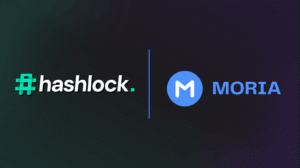Blockchain and the Internet of Things (IoT) are two transformative technologies that are revolutionizing various industries. While blockchain provides a secure and transparent method of recording transactions, IoT enables the interconnection of devices, creating a vast network of data. The integration of blockchain and IoT offers numerous benefits, including enhanced security, improved data integrity, and streamlined processes. However, this integration also presents several scalability challenges that need to be addressed for widespread adoption and efficient functioning. In this article, we will explore the scalability challenges in blockchain and IoT integration, discuss potential solutions, examine case studies, and look into future trends and innovations.
Introduction to Blockchain and IoT Integration
Blockchain is a decentralized, immutable ledger technology that ensures transparency and security in transactions. IoT, on the other hand, refers to a network of interconnected devices that collect and exchange data. By combining these two technologies, organizations can create a trusted and efficient ecosystem where devices can autonomously interact and transact with each other. However, as the volume of data generated by IoT devices increases exponentially, and the number of transactions on the blockchain grows, scalability becomes a critical concern.
Scalability Challenges in Blockchain and IoT Integration
- Increased data volume: With the proliferation of IoT devices, the amount of data being generated is growing at an unprecedented rate. This massive influx of data poses significant challenges for blockchain networks that need to process and store each transaction. As a result, traditional blockchain architectures struggle to handle the sheer volume of data, leading to bottlenecks and increased latency.
- Processing speed and latency issues: Blockchain networks typically rely on consensus algorithms, such as Proof of Work (PoW) or Proof of Stake (PoS), to validate transactions and maintain the integrity of the ledger. However, these algorithms can introduce processing delays, limiting the speed at which transactions can be confirmed. In IoT applications where real-time interactions are crucial, such latency issues can hinder the effectiveness of the system.
- Network congestion and scalability limitations: As more devices join the IoT network and participate in blockchain transactions, network congestion becomes a significant concern. The increased demand for network resources can lead to delays, high transaction fees, and reduced scalability. Moreover, the size of the blockchain itself grows exponentially, making it challenging for new participants to join and synchronize with the network.
- Security and privacy concerns: The integration of blockchain and IoT introduces new security and privacy considerations. While blockchain technology ensures the integrity of data and transactions, IoT devices are often vulnerable to attacks. The interconnected nature of IoT devices also raises concerns about data privacy and the potential exposure of sensitive information. Achieving a balance between security, privacy, and scalability is crucial for successful blockchain and IoT integration.
Solutions to Address Scalability Challenges

To overcome the scalability challenges in blockchain and IoT integration, several solutions have been proposed and implemented:
- Sharding and partitioning: Sharding involves dividing the blockchain network into smaller partitions called shards, with each shard processing a subset of transactions. This approach increases the network’s capacity to handle a higher volume of transactions simultaneously, improving scalability. By distributing the load across multiple shards, sharding reduces latency and enhances the overall performance of the blockchain network.
- Off-chain transactions: Off-chain transactions involve conducting certain transactions outside the main blockchain network. These transactions can occur on secondary layers or sidechains, which offer faster confirmation times and lower fees compared to the main blockchain. Off-chain solutions can significantly improve scalability by reducing the burden on the main blockchain while maintaining the security and integrity of the system.
- Interoperability protocols: Interoperability protocols enable seamless communication and data exchange between different blockchain networks and IoT devices. These protocols allow for the interoperability of various platforms and ensure that devices can interact with multiple blockchains simultaneously. By enabling cross-chain transactions, interoperability protocols enhance scalability by providing greater flexibility and choice to users.
- Consensus mechanisms: Consensus mechanisms play a vital role in blockchain networks by ensuring agreement on the state of the ledger. However, traditional consensus algorithms like PoW and PoS can be resource-intensive and slow, limiting scalability. To address this, new consensus mechanisms, such as Proof of Authority (PoA), Delegated Proof of Stake (DPoS), and Practical Byzantine Fault Tolerance (PBFT), have emerged. These mechanisms offer faster transaction processing times, reduced energy consumption, and improved scalability.
Case Studies on Scalability Solutions
To better understand how scalability solutions are being implemented in real-world scenarios, let’s examine a few case studies:
- Ethereum and the implementation of Ethereum 2.0: Ethereum, one of the most popular blockchain platforms, has faced scalability challenges due to its reliance on PoW consensus. However, with the upcoming implementation of Ethereum 2.0, the network is transitioning to a PoS consensus mechanism and introducing sharding. These changes are expected to significantly enhance Ethereum’s scalability, enabling it to process thousands of transactions per second.
- IOTA’s Tangle architecture: IOTA, a blockchain platform specifically designed for IoT, utilizes a unique architecture called the Tangle. Instead of using a traditional blockchain, IOTA’s Tangle is based on a directed acyclic graph (DAG). This architecture allows for parallel transactions and eliminates transaction fees, enabling high scalability and fast confirmation times.
- Hyperledger Fabric’s modular approach: Hyperledger Fabric, a popular permissioned blockchain platform, employs a modular architecture that enables scalability and privacy. The fabric uses channels to separate different groups of participants, allowing for independent transaction processing and improved performance. By adopting a modular approach, Hyperledger Fabric provides organizations with flexibility in designing scalable and secure blockchain solutions.
Future Trends and Innovations
The scalability challenges in blockchain and IoT integration are continuously being addressed through ongoing research and innovation. Here are some future trends to watch out for:
- Layer 2 scaling solutions: Layer 2 scaling solutions, such as state channels and sidechains, aim to alleviate congestion on the main blockchain by conducting transactions off-chain. These solutions offer increased throughput and reduced fees while maintaining the security and decentralization of the underlying blockchain.
- Integration with edge computing and 5G technology: The integration of blockchain with edge computing and 5G technology holds tremendous potential for improving scalability in IoT applications. Edge computing allows for data processing closer to the source, reducing latency and enhancing real-time interactions. Combining edge computing with blockchain can enable faster transaction processing and more efficient use of network resources.
- Advancements in consensus algorithms: Consensus algorithms continue to evolve, with ongoing research focused on developing more scalable and energy-efficient mechanisms. Hybrid consensus models that combine the strengths of different algorithms are being explored to achieve higher transaction throughput without compromising security.
- Standardization and regulatory frameworks: As blockchain and IoT integration becomes more widespread, the need for standardization and regulatory frameworks becomes crucial. Standardization efforts will facilitate interoperability between different platforms, while regulations will address privacy, security, and compliance concerns. These developments will contribute to the scalability and widespread adoption of blockchain and IoT integration.
Conclusion
The integration of blockchain and IoT presents numerous opportunities for enhancing security, transparency, and efficiency in various industries. However, scalability challenges must be effectively addressed for widespread adoption and seamless functioning. Through solutions such as sharding, off-chain transactions, interoperability protocols, and innovative consensus mechanisms, the scalability of blockchain and IoT integration can be improved. Furthermore, ongoing research and advancements in technology will continue to drive innovation, ensuring a scalable and secure future for blockchain and IoT applications.
Frequently Asked Questions (FAQs)
- How does blockchain technology enhance IoT security?
Blockchain technology enhances IoT security by providing a decentralized and immutable ledger that ensures the integrity and transparency of data. It eliminates the need for a central authority, making it difficult for malicious actors to manipulate or tamper with the data recorded on the blockchain. - What are the main scalability challenges faced in integrating blockchain and IoT?
The main scalability challenges in integrating blockchain and IoT include increased data volume, processing speed and latency issues, network congestion, and security and privacy concerns. These challenges arise due to the massive influx of data from IoT devices and the need for consensus algorithms to validate transactions on the blockchain. - How does sharding help improve scalability in blockchain networks?
Sharding improves scalability in blockchain networks by dividing the network into smaller partitions called shards. Each shard processes a subset of transactions, allowing for parallel processing and increasing the network’s capacity to handle a higher volume of transactions simultaneously. - What role does consensus play in addressing scalability issues?
Consensus plays a crucial role in addressing scalability issues by ensuring agreement on the state of the ledger. However, traditional consensus algorithms like Proof of Work (PoW) and Proof of Stake (PoS) can be resource-intensive and slow. New consensus mechanisms, such as Proof of Authority (PoA) and Delegated Proof of Stake (DPoS), offer faster transaction processing times and improved scalability. - Are there any real-world use cases of successful blockchain and IoT integration?
Yes, there are several real-world use cases of successful blockchain and IoT integration. For example, supply chain management, where blockchain ensures transparency and traceability, while IoT devices provide real-time data on the movement and condition of goods. Additionally, smart cities leverage blockchain and IoT to enhance efficiency in areas like energy management, waste management, and transportation systems.






